A Nation Mourns President Lincoln
Introduction
Part of understanding how the nation mourned the death of Abraham Lincoln is understanding how they mourned their loved ones as well. Traditionally in the mid-19th century, people died in their home, women in the family would prepare the body for burial, there would be a wake where the living would sit all day and night with the dead, then a funeral and burial would take place. All this began to change during the Civil War.
Technology was changing at a break-neck pace due to the war effort and one of those technologies was the process of embalming using chemicals. Families would pay for their loved one to be embalmed on the battlefield so they could be returned to their hometown for a funeral and burial. This was the turning point in American funeral rites where it became commonplace for bodies to be embalmed before burial.
Mourning
The period of mourning that happened after the passing of a loved one also looked different in the mid-19th century. Some customs made practical sense while others were based in superstition. Mirrors would be covered, windows would be draped, and the door would be decorated with black crepe fabric. Pictures would be laid face down and all clocks would be stopped. The body was always carried out of the home feet first as it was believed going headfirst was bad luck.
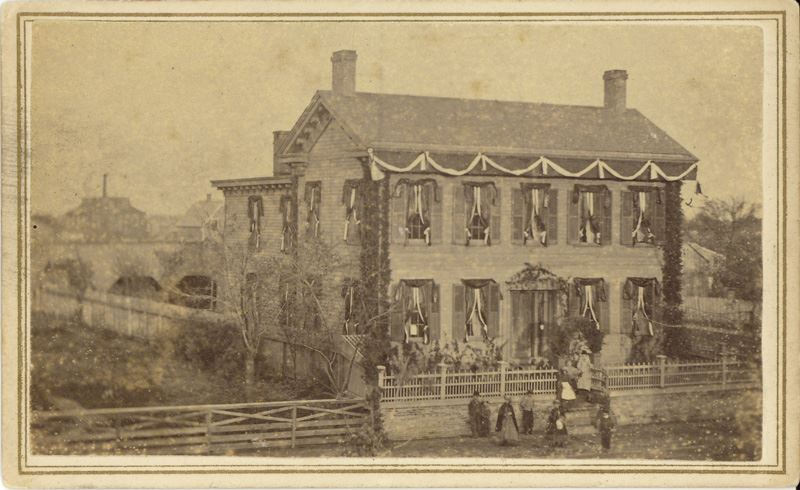 (AV-LCDV062, ALPLM Audiovisual Collection, Digitized thanks to an ISL Grant)
(AV-LCDV062, ALPLM Audiovisual Collection, Digitized thanks to an ISL Grant)
Clothing also indicated a period of mourning for a loved one. Men would wear black bands on their arm or hat. Women dressed in all black for a designated period depending on their relationship with the deceased. For example: husbands would be mourned for one to two years while a sibling would be mourned for six to eight months. The upper-class could afford to have clothing made just for the occasion but middle- and lower-class women often dyed the clothing they currently owned black. Women would also wear a black veil for both practical and superstitious reasons. It would hide a puffy, tear-streaked face from the public, but a veil would also protect a passer-by from being haunted by the ghost of the dead, who were said to stay near their living relatives.
Given the strict rules about mourning and attire of the time, it would follow that attendees at a funeral would follow protocols of the day as well. It was NOT common for attendees at a funeral to wear black because that was reserved for the family members. They would show their grief by wearing a black armband or black cockade on their sleeve. [1]. A cockade is a silk or satin rosette that can be pinned to the front or sleeve of an outfit. Examples can be seen on the arms of men and women in The Body of the Martyr President Abraham Lincoln.
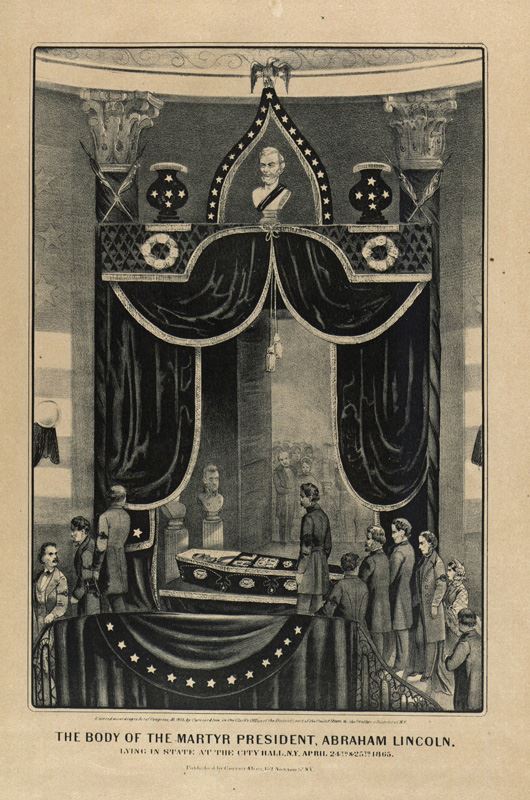 (AV-LP245, ALPLM Audiovisual Collection, Digitized thanks to an ISL Grant)
(AV-LP245, ALPLM Audiovisual Collection, Digitized thanks to an ISL Grant)
Assassination
On April 14, 1865, President, and Mary Lincoln, along with Major Henry Rathbone and his fiancée Clara Harris, headed to Ford’s Theater for a performance of “Our American Cousin”. This performance was particularly special in that it was the last performance of Laura Keene, a famous actress of the time.
John Wilkes Booth, another famous actor of the time, knew Ford’s Theater well as he had performed there before the night of the assassination. It was commonplace for actors and others to visit special guests in the theater box, and Booth knew this and used it to his advantage. Booth was able to gain access to the presidential box and once inside he jammed the door shut to ensure no one was able to enter behind him. As he approached behind President Lincoln, he raised a single shot derringer pistol and shot into the back of Lincoln’s head.
After completing what he was there to do, Booth leaped down to the stage and made a quick escape out of the theater through the backstage door.
For additional information on the assassination, we recommend visiting the Ford’s Theatre website.
Death
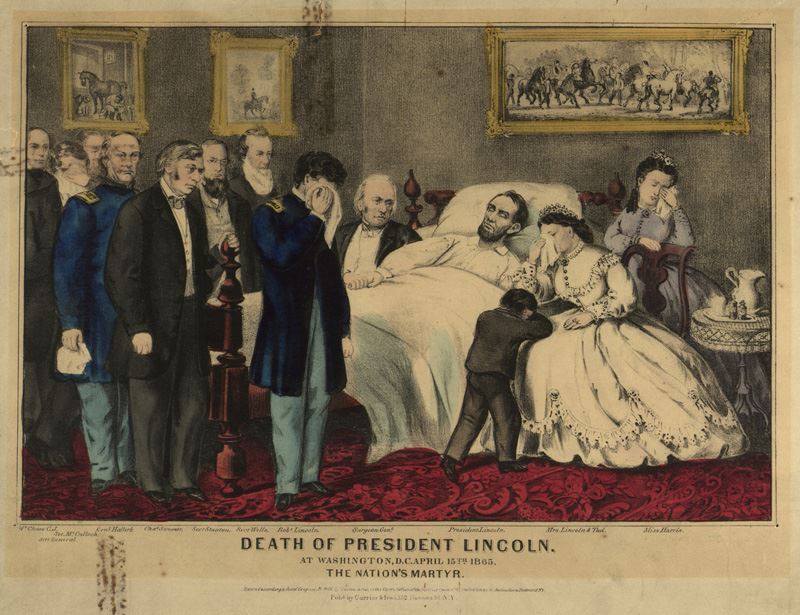 (AV-LP211, ALPLM Audiovisual Collection, Digitized thanks to an ISL Grant)
(AV-LP211, ALPLM Audiovisual Collection, Digitized thanks to an ISL Grant)
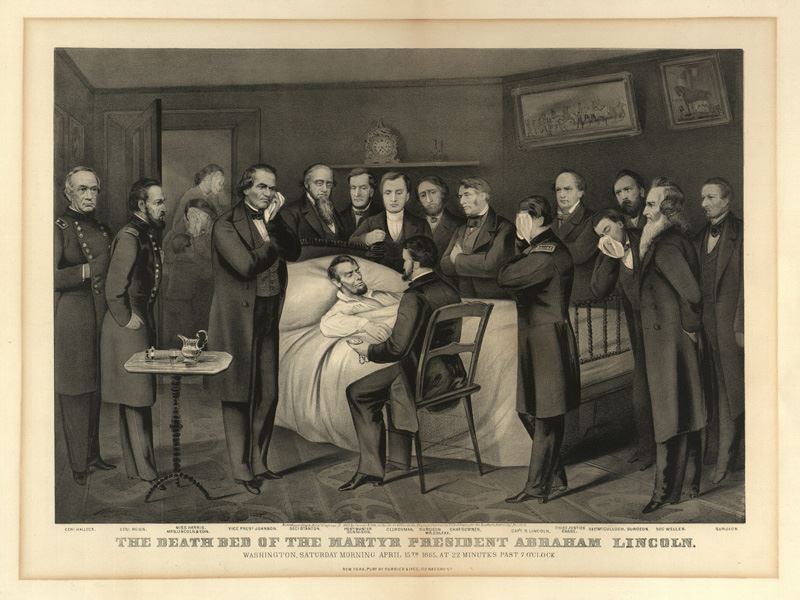 (AV-LP218, ALPLM Audiovisual Collection, Digitized thanks to an ISL Grant)
(AV-LP218, ALPLM Audiovisual Collection, Digitized thanks to an ISL Grant)
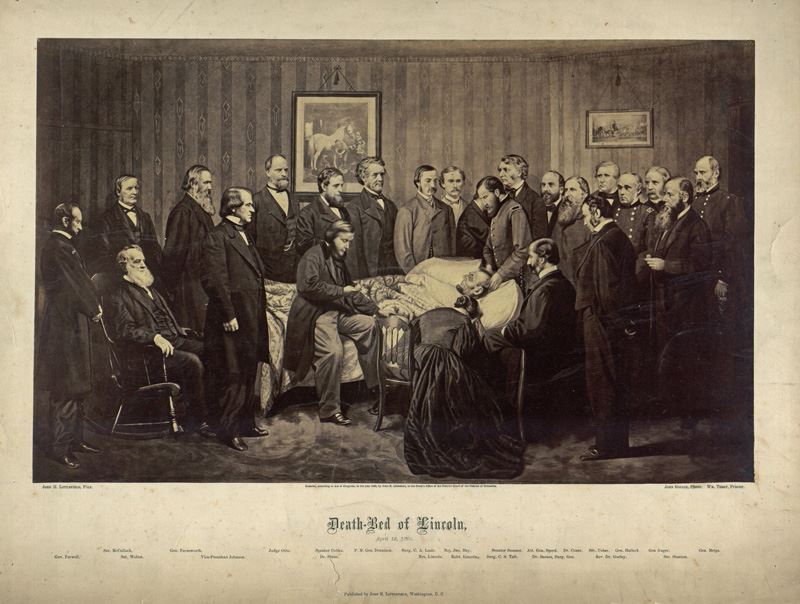 (AV-LP640A, ALPLM Audiovisual Collection, Digitized thanks to an ISL Grant)
(AV-LP640A, ALPLM Audiovisual Collection, Digitized thanks to an ISL Grant)
Within our collection at ALPLM, we have many varying images that were created to depict the deathbed of Lincoln. These three examples show the various ways that artists interpreted the news of that fateful night in the Petersen’s boarding house across from Ford’s Theatre. In each depiction, there are more people in the room than would have originally been possible, due to the size of the small bedroom.
We know from the diary of the Secretary of the Navy, Gideon Welles[2], that many people came and went that night. He identified ‘several surgeons’, Dr. Hall, Dr. Gurley, Senator Sumner, Speaker Colfax, Secretary of the Treasury McCulloch, Secretary of War Stanton, Attorney General Speed, Secretary of the Interior Usher and the ‘other members of the cabinet’ [Postmaster General Dennison]. The exception was Secretary of State Seward who had also been attacked that night in his home. Welles also noted Robert Lincoln and Mrs. Lincoln were joined by Miss Harris, Mrs. Dixon, and Mrs. Kinney in a separate room.
[2] Welles, Gideon, and Edgar Thaddeus Welles. Diary of Gideon Welles, Secretary of the Navy under Lincoln and Johnson. Vol. 2. Boston: Houghton Mifflin Co., 1911.
Funeral & Burial
Lincoln’s body was taken throughout the country for display so that a grief-stricken populace could say farewell. The funeral tour was the most prolonged, most elaborate, and the most repeated ceremony in American history. Covering over 1,700 miles, the train stopped for 12 major funeral processions in different cities. After 15 days, Lincoln was seen by more people as a dead president than as a live candidate.
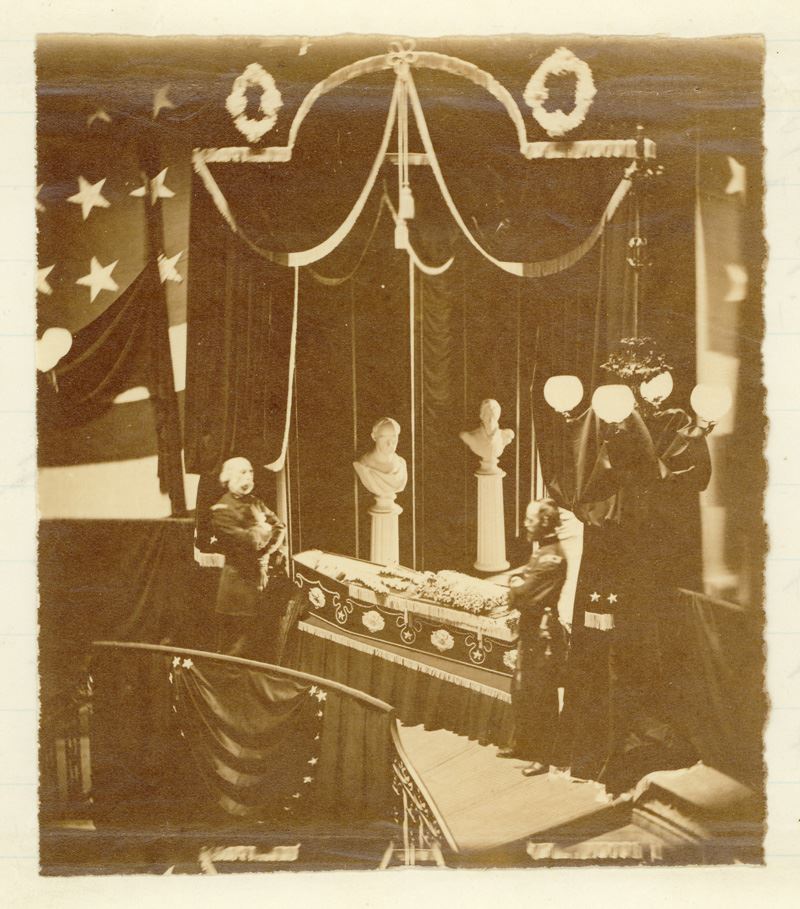 (AV-LPh843, ALPLM Audiovisual Collection, Digitized thanks to an ISL Grant)
(AV-LPh843, ALPLM Audiovisual Collection, Digitized thanks to an ISL Grant)
Taken on April 24, 1865, in New York City, this photograph created immediate controversy. Mary Lincoln felt that it was highly disrespectful to Lincoln’s memory, yet others thought that the picture would provide an opportunity for Americans to view the dead president. Caught between these conflicting opinions, Secretary of War Edwin Stanton ordered all the plates and negatives confiscated. One print was made, however, and sent to Stanton in the hope that he might allow further reproductions. Unfortunately, Stanton ordered the destruction of all materials and forbade any future photographs being taken of Lincoln’s body. For all practical purposes, the controversy was over.
But what about the one print that had been mailed to Stanton? Years later, after the secretary’s death, his son found that single picture preserved in Stanton’s files. Apparently, the Secretary of War couldn’t bring himself to destroy that last image of Lincoln. Unsure what to do, Lewis Stanton mailed the photo to Lincoln’s former secretary, John Nicolay, in 1887 who proceeded to keep it hidden. It remained undiscovered until 1952 when Ron Rietveld found it in the manuscript collections of the Illinois State Historical Library (the precursor to the Abraham Lincoln Presidential Library).
Once the initial shock of the assassination had passed, Springfield began to prepare for Lincoln’s funeral. At 9:00 a.m. on the morning of May 3, the funeral train pulled into Springfield where a respectful crowd waited quietly. Some wept as they recalled the face of their lost friend and leader, while others just looked on in silence. The casket was then taken to the Old State Capitol where the body lay in state in Representatives Hall.
On May 3 and 4, 1865, Lincoln’s coffin was presented for its last public viewing. Visitors came from throughout Illinois to file past the coffin in a show of respect and grief. The former president was then taken to Oak Ridge Cemetery on the outskirts of the city.
https://artsandculture.google.com/story/JAVBwFj8f0ZXKQ
https://dnrhistoric.illinois.gov/experience/sites/site.lincoln-tomb.html
[1] https://passionforthepast.blogspot.com/2011/07/19th-centurt-mourning-practices-revised.html
[2] Welles, Gideon, and Edgar Thaddeus Welles. Diary of Gideon Welles, Secretary of the Navy under
Lincoln and Johnson. Vol. 2. Boston: Houghton Mifflin Co., 1911.